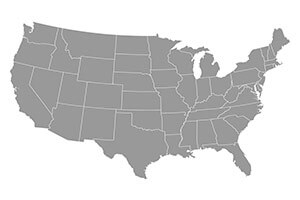
UNITED STATES
Early honey crops in the United States have been better this year due to favorable moisture and weather conditions over much of the country. Exceptions include Florida, where drought hurt honey crops, as well as some northern locations that had exceptionally high winter colony losses and a late spring. Early reports on honey crops in the East Central and West Central areas looked encouraging. However, the big question marks were the Upper Midwestern states of North and South Dakota, Montana and Minnesota. These four states together account for a large part of the yearly U.S. honey production. West Coast honey production will definitely be up this year after good moisture conditions returned to these drought-prone states.
Early reports suggested that colony health was generally good over much of the country. However, later summer buildup of mite and small hive beetle populations will no doubt take their toll on beeyards. European foulbrood and viruses caused colony losses and weaker colonies earlier this spring in some beeyards. A few beekeepers said that their disease control efforts were stymied by the new Veterinary Feed Directive law that became effective this year.
NORTHEAST
Earlier in the spring cool, rainy weather at times slowed bee foraging and colony buildup. However, a number of reporters felt that later flows would be better and perhaps even prolonged by the abundance of ground moisture. The earlier rainy weather was also at times blamed for increased swarming in this area. Bees were working a number of flowering plants including clover, tulip-poplar and black locust. Beekeepers had been adding honey supers and were anxious to start honey extracting since many have been sold out of honey for several months now, but consumer demand has not let up. Later this summer and early fall beekeepers were hoping for good fall flower flows from sources like goldenrod, knotweed and asters.
MIDEAST
Honey crops over much of North Carolina, Kentucky and Tennessee have been good to excellent. A few locations were hampered by rainy weather earlier this spring, but overall honey crops have been very good. Many honey flows were mentioned including black locust, privet, tulip poplar, catalpa, sumac, holly, blackberry, raspberry, huckleberry, vetch, sweet clover, basswood, tupelo gum, gallberry and numerous wildflowers. In Virginia and West Virginia honey flows were also generally good, but we did receive more reports of weather-related problems. Honey flows were reported from tulip-poplar, sumac, thistle, persimmon, clover and numerous wildflowers. Beekeepers in this area had their fingers crossed that the sourwood flow would be abundant this season. Moisture conditions continue to be listed as satisfactory to good over most of the Mideast
Beekeepers have begun extracting honey and consumer demand remains excellent. Some small-lot wholesale trading is also occurring, but much of the honey in this area is sold locally directly to consumers.
SOUTHEAST
Honey flows in Florida have been a huge disappointment for many beekeepers. However, as this was written, the state was starting to receive rainfall again after a terrible drought that lasted most of the spring. Beekeepers were placing their end-of-season hopes on Brazilian pepper, melaleuca, goldenrod, Spanish needles and other late season flowers. Spring honey crops in Florida were poor to average for most main flows including orange, tupelo, gallberry, palmetto, mangrove, tallow and assorted wildflowers. As is always the case, some parts of the state did better than others. Honey crop averages in the state are varying from 15 to 50% below normal. Georgia honey flows have also been below normal, especially in the southern part of the state. Georgia tupelo honey crops were a bright spot since they were better than earlier expected.
On the other hand, reports from Alabama, Mississippi and South Carolina have been more encouraging. Colonies came into the season in good shape and adequate moisture has encouraged better honey flows from wildflowers, privet, sumac, crepe myrtle, mimosa and clover. Along the Gulf Coast tallow flows were also rated as average to good.
Beekeepers have extracted a large part of their new crop honey and are looking for buyers now. Wholesale prices and interest is varying tremendously, depending on floral source and color. While some of the darker grades are selling for as low as $1.60 to $1.70, new crop white honey such as orange and gallberry are selling as high as $2.15 to $2.25 per pound. Some small lots are selling as high as $2.40 per pound for new crop white honey. Retail sales remain strong in the Southeast, especially for locally produced varietal honey.
SOUTHWEST
As of early summer, temperatures had become much hotter and drier, especially in Arizona, New Mexico and parts of West Texas. The main spring honey flows had ended, but beekeepers were still hoping for summer flows from irrigated alfalfa and cotton. Brush and wildflower flows were very good earlier this spring when abundant rains brought a sea of wildflowers to parts of the desert southwest. Parts of Oklahoma, Arkansas, east Texas and Louisiana have had adequate moisture for nectar flows from wildflowers, blackberries, vetch, vervain, clover, alfalfa, basswood, rattan, huckleberry, partridge pea, horsemint, bitterweed and cowpeas. Along the Gulf Coast, tallow has also produced some nice honey crops, according to our reporters.
Most beekeepers had sold out of their previous year’s honey inventories and were anxious to start marketing their new-crop honey. Prices and demand were up some from last season.
EAST CENTRAL
Honey flow reports are very encouraging from a number of our reporters in this region. Although some Michigan and Wisconsin beekeepers complained about earlier cool, wet weather slowing colony buildup, reports from Illinois, Indiana and Ohio were better. Bees generally overwintered well and then early sources like …


